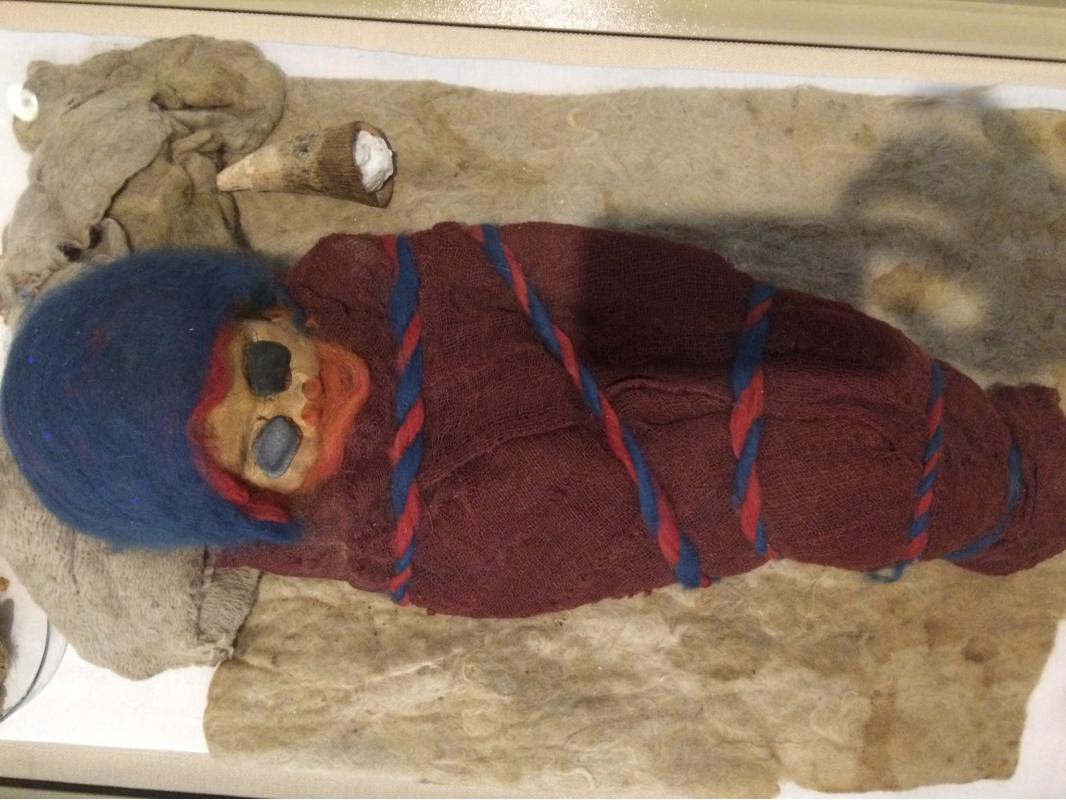The Tarim mummies, an extraordinary collection of ancient human remains, have unveiled a captivating chapter in the history of the Tarim Basin, located in present-day Xinjiang, China. These mummies, dating back to as early as 1800 BC, provide a fascinating glimpse into the lives and cultures of the past.

Discovered in the arid deserts of the Tarim Basin, the mummies have been remarkably preserved, offering a wealth of information about the people who lived in the region during that time. The mummies exhibit distinct physical characteristics, including Caucasoid features and fair hair, challenging traditional assumptions about the population of ancient Central Asia.
The Tarim mummies have been found in burial sites scattered across the Tarim Basin, each revealing unique insights into the cultural practices and beliefs of their respective communities. The graves contain a wide array of artifacts, including intricately woven textiles, beautifully crafted jewelry, and well-preserved organic materials, providing valuable evidence of early human craftsmanship and cultural sophistication.

The recent discovery of a new group of individuals, dated to approximately 2100 to 1700 BC, has expanded our understanding of the Tarim mummies’ timeline. These additional findings shed light on the earlier periods of human occupation in the region and contribute to our knowledge of the Tarim Basin’s ancient history.
The Tarim mummies have sparked significant scientific and historical interest, attracting scholars from various disciplines. Through extensive research and analysis, experts are unraveling the mysteries surrounding the mummies’ origins, genetic ancestry, and cultural connections. The findings have implications for understanding the complex interactions and migrations of ancient populations in Central Asia.
Moreover, the Tarim mummies have become a source of pride and fascination, both locally and globally. They serve as a testament to the rich cultural heritage of the Xinjiang region and contribute to the diverse tapestry of human history.

As ongoing research sheds further light on the Tarim mummies, their significance continues to grow. These ancient individuals provide a tangible link to the past, allowing us to connect with the lives and stories of people who thrived in the Tarim Basin thousands of years ago. Their legacy serves as a reminder of the enduring human spirit and the profound impact of our ancestors on shaping the world we inhabit today.
The Tarim mummies, an extraordinary collection of ancient human remains, have unveiled a captivating chapter in the history of the Tarim Basin, located in present-day Xinjiang, China. These mummies, dating back to as early as 1800 BC, provide a fascinating glimpse into the lives and cultures of the past.

Discovered in the arid deserts of the Tarim Basin, the mummies have been remarkably preserved, offering a wealth of information about the people who lived in the region during that time. The mummies exhibit distinct physical characteristics, including Caucasoid features and fair hair, challenging traditional assumptions about the population of ancient Central Asia.
The Tarim mummies have been found in burial sites scattered across the Tarim Basin, each revealing unique insights into the cultural practices and beliefs of their respective communities. The graves contain a wide array of artifacts, including intricately woven textiles, beautifully crafted jewelry, and well-preserved organic materials, providing valuable evidence of early human craftsmanship and cultural sophistication.

The recent discovery of a new group of individuals, dated to approximately 2100 to 1700 BC, has expanded our understanding of the Tarim mummies’ timeline. These additional findings shed light on the earlier periods of human occupation in the region and contribute to our knowledge of the Tarim Basin’s ancient history.
The Tarim mummies have sparked significant scientific and historical interest, attracting scholars from various disciplines. Through extensive research and analysis, experts are unraveling the mysteries surrounding the mummies’ origins, genetic ancestry, and cultural connections. The findings have implications for understanding the complex interactions and migrations of ancient populations in Central Asia.
Moreover, the Tarim mummies have become a source of pride and fascination, both locally and globally. They serve as a testament to the rich cultural heritage of the Xinjiang region and contribute to the diverse tapestry of human history.

As ongoing research sheds further light on the Tarim mummies, their significance continues to grow. These ancient individuals provide a tangible link to the past, allowing us to connect with the lives and stories of people who thrived in the Tarim Basin thousands of years ago. Their legacy serves as a reminder of the enduring human spirit and the profound impact of our ancestors on shaping the world we inhabit today.